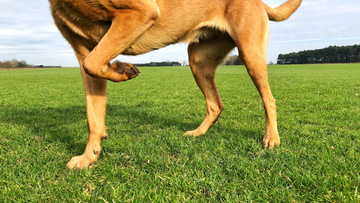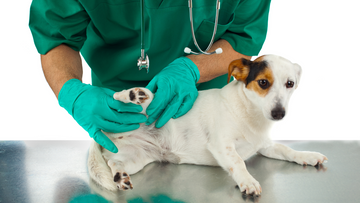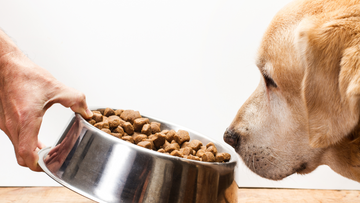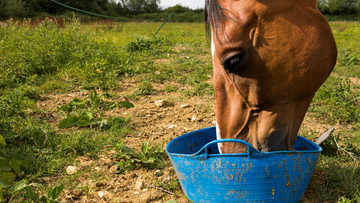Soft tissue injuries are common in dogs. These include playful running or unexpected accidents. Knowing the signs of a soft tissue injury is vital whether your dog is active or calm. Learn how to diagnose it and help them recover quickly.
What is a Soft Tissue Injury?
Soft tissue injuries involve damage to a dog's muscles, tendons, or ligaments. They generally happen from overuse, sudden movements, or trauma. These injuries range from mild strains or sprains to more severe ligament tears.
Unlike fractures, soft tissue injuries don’t show up on X-rays. This makes soft tissue injuries challenging to diagnose. Common soft tissue injuries in dogs include sprains, strains, muscle tears, and tendon injuries, usually in the legs, shoulders, or back.
Causes and Risk Factors

Any dog can experience a soft tissue injury. However, active breeds, like Border Collies, Retrievers, and working dogs, are more prone to them. Dogs that do agility training, herding, or other high-energy sports are at higher risk due to the repetitive movements and physical strain involved in these activities. Older dogs and those with existing health issues are also at risk. Even a simple slip or awkward landing can lead to injury.
Recognizing Symptoms of Soft Tissue Injury
Dogs can’t tell us when something hurts. This makes it important to notice any changes in their behavior. Here are common signs of a soft tissue injury:
- Limping or favoring one limb
- Swelling and sensitivity to the injury
- Reduced activity or lethargy
- Changes in posture, such as back arching or head lowering to relieve pain
Diagnosing a Soft Tissue Injury
The diagnosis of soft tissue injuries usually starts with a physical exam. Your vet will check for swelling, tenderness, and limited movement in the injured area. X-rays cannot detect soft tissue damage, so your vet may suggest an ultrasound or MRI to better examine the muscles, ligaments, and tendons.
Treatment and Recovery
Treatment for soft tissue injuries focuses on rest, rehab, and pain management. Here are common recovery methods:
- Rest and limit activity: To avoid further strain, it is crucial to keep your dog calm and restrict movement. Crate rest or confining it to a small space is often recommended in the early weeks.
- Pain management: Your vet may give medication to reduce pain and swelling.
- Physical therapy: Once the initial inflammation goes down, physical therapy can support recovery. Simple exercises, like stretching or water walking, help with movement without stressing the injury.
- Cold and heat therapy: Use ice packs on the injured area to reduce inflammation and numb pain. After a few days, heat therapy can boost blood flow and relax the muscles.
Recovery Timeline and Prognosis
The time it takes to recover from a soft tissue injury depends on the severity of the injury, your dog’s age, and their health. Minor strains may heal in two to three weeks. More severe injuries, like ligament tears, can take months to recover fully. Regular vet visits are essential to check progress and adjust treatment as needed.
Soft tissue injuries can be challenging, but with quick diagnosis, a good recovery plan, and steady care, your dog can heal and return to normal activities. You can help your dog stay active and healthy by staying attentive and working with your vet.






















